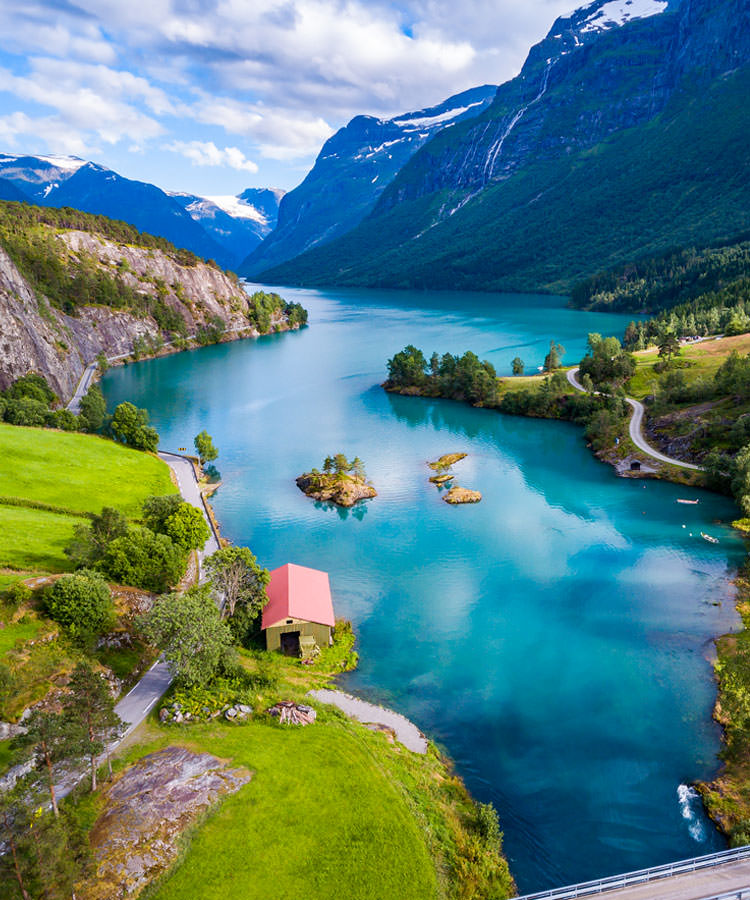It’s no secret that U.S. somms have big opinions on what’s hot, what’s not, and everything in between when it comes to wine, food, and booze. But we’re not the only country with opinionated wine professionals. The word “sommelier” is of French origin, after all, and around the world, oenophiles seek out sommeliers to guide their wine drinking. So we asked six international somms: How do wine drinking trends stack up from country to country? From natural wine to gin, South African wines to American Zinfandel, here’s what’s hot right now in these six countries.
Norway
“[What’s popular] depends on where you are in the country. Oslo drinks more natural wine, but in Stavanger, we are more classic. Champagne, red and white Burgundy, and German Riesling are all popular. Right now, the things I find most interesting are South African whites and reds, Austrian Pinot Noir and Gruner Veltliner with skin contact.” — Pål Gøran Stolt-Larsen Pettersen, Restaurant Manager & Sommelier at Tango Bar & Kjøkken
Sweden
“The general public drinks Amarone, Ripasso, and Zinfandel (both American Zinfandel and Italian Primitivo labeled as Zinfandel — that name sells more!), but I wouldn’t call those wines ‘trendy.’ Organic wines are trendy amongst the general public; a lot of customers are asking for them. In this case, the certification becomes more important than the actual taste of the wine, since most of them buy ‘organic’ wines that cost around $10.
For people drinking quality wines, wines that until recently were pretty unexplored are trendy, like Sicily, grower Champagnes, or even a region like the Loire Valley. Even in the wine community, you could divide those that are drinking classic wines from those that are 100 percent into natural wines. Natural wine is everywhere — I guess it’s the new big thing.
For me, I just like wines that taste good, regardless if they are ‘natural’ or not. I drink a lot of German Riesling, especially from the Mosel, tons of Beaujolais from Jean Foillard and the likes, Rosso di Montalcino from La Torre and of course red and white Burgundy!” — Arvid Lundström, Sommelier, PM & Vänner Hotel
Germany
“My workplace is in the middle of nowhere, but in the cities, gin and craft beer in every variation are trendy. Orange wine, fresh and fruity wines, and Portuguese reds are also popular right now.” — Britta Minder, Head Sommelier, Schlosshotel Müenchhausen
Lithuania
“At this time, Lithuanians are really enjoying wine. The general sales are increasing and higher quality wines are increasing, too. The most popular are Italian reds, such as Primitivo, Negroamaro, Aglianico, Nero d’Avola, and Amarone, as well as Spanish reds like Monastrell and Garnacha. For white wines, Germany, France and northern Italy are the most popular. People are shifting away from sweeter Kabinett Riesling styles and Gewürztraminers to oaky Chardonnays and drier, more mineral wines. The trend is really visible because we see more Austrian Rieslings and Grüners on the market. The biggest increase is in sparkling wine consumption — Lithuania last year had the biggest percentage increase in Champagne sales in all of Europe. Champagne is climbing, followed by Crémant. Cava, and Prosseco are both stable, but other sparkling wines also see an increase.” — Narimantas Miezys, Head Sommelier, Somm
Sicily, Italy
“Most people [in Sicily] drink local wines, but many are also looking for wines from other regions or countries. My list is almost 60 percent local wines and the remaining 40 percent Italian and international wines. There are plenty of organic wines and indigenous grapes in Sicily from wineries such as Gulfi, Arianna Occhipinti, and Palmento Costanzo, or more famous wineries like Donnafugata, Regaleali, and Planeta.” — Massimiliano Chessari, Sommelier, Donnafugata Golf Resort
Canada
“Wine drinking trends are very different from Montreal to Quebec City. In Montreal, they are big fans of orange and natural wines from around the world. In Quebec City, the trend is mostly around local producers from Niagara or Quebec. The Quebec winemaking culture is young for us; we’ve only begun making wine since the beginning of the 1980s. Most winemakers use hybrid grapes, as the climate is difficult, and make lots of of ice wine, ice cider, and les poirés de glace (ice cider made with pears).
In Niagara, there are magnificent wines. Whether for sparkling, still or sweet wine, you should discover this region. After tasting many wines from this region, I’ve found that Riesling, Chardonnay, Cabernet Franc, and Gamay are the grapes that give the best results. The Prince Edward County region, between Toronto and Montreal, makes great Pinot Noir and Chardonnay.
Quebec customers like wines from everywhere in the world; at the wine store, we have a large selection from everywhere, including California, Chile, Argentina, Spain, and Italy. At the restaurant, I am lucky to have guests that trust me, so I can sell them what I want for the most part. Otherwise, it is evident that French wines occupy a very big place; guests often like to drink a recognizable “label” like Côte Rôtie or Clos Vougeot. I try more and more to offer wines from all over the world, if guests are open-minded enough!” — Marie-Andrée Thériault, Head Sommelier, L’Initiale
